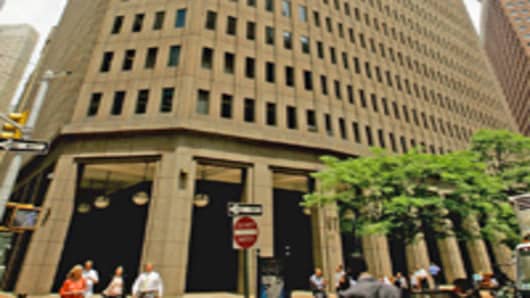Rival banks are eagerly awaiting this week's earnings announcement from Goldman Sachs not only for the third-quarter results but for how the firm deals with up to $20 billion in bonuses just a year after it received federal bailout money during the height of the financial crisis.
While most investment banks have returned to profitability after nearly two years of record losses, Wall Street is now facing a major public relations problem.
During good times, financial firms hand out a chunk of company earnings in the form of year-end bonuses, and because Goldman is now making more money than its rivals (its third quarter earnings are expected to top $2 billion), the spotlight is on how the firm will dole out the bonus bounty.
Investment banks at rival firms say they have been told by their counterparts at Goldman that the firm understands the public relations dilemma it faces in handing out huge bonuses to its bankers and traders only a year after needing federal assistance to survive.
Despite public statements from CEO Lloyd Blankfein that the firm will continue to pay its people despite the anti-Wall Street mood of the country, bankers at rival firms say based on their discussions with counterparts at Goldman, the firm is preparing to take a number of steps to lessen the public relations hit.
One way Goldman may be preparing to do that is to hand out the majority of the bonus money in company stock instead of cash, these bankers say.
Generally on Wall Street about 50 percent of a top executive's bonus comes in the form of stock; the stock composition for lower level executives is about 20 percent.
But that stock compensation is expected to be much higher for both classes, comprising the majority of the bonus award at Goldman, these people say.
While the increased stock award was largely expected, Goldman is also expected to do something unusual regarding charity, possibly, according to bankers at rival firms, making a massive charitable contribution out of the bonus money.
Investment bankers are often encouraged to make significant charitable contributions, if Goldman makes such a payment, it would be the first time any major firm diverted its bonus-pool money specifically to charity.
Goldman spokesman Lucas Van Praag said Sunday that bonuses will be paid out at the end of the year, so no firm decisions have been made about their composition.
Van Praag, however, wouldn't deny that senior executives at the firm are discussing bonuses—including an increased portion being paid in stock and more of the money devoted to charity.
Another way Goldman is looking to deal with the image issue is to have Blankfein, normally one of the more reticent CEOs on Wall Street, increase his public profile and give selective interviews.
The aim would be to dispel the growing belief in the media that the firm, with its vast network of former partners working throughout government—former Goldman chairmen Robert Rubin and Hank Paulson were US Treasury secretaries—doesn't get preferential treatment from the government as it enriches its senior executives.
Goldman received $10 billion of federal bailout money last year. But more significantly, Goldman benefited from the government's bailout of troubled insurer AIG because it held insurance contracts on debt that were made good once AIG was saved.
On top of that, Goldman was able to be classified as a commercial bank, even though it doesn't hold substantial amounts of deposits from consumers.
Because of that status, Goldman can borrow from the Federal Reserve's discount window, and more cheaply in the private markets to finance its trades, particularly in the fixed income market, one of the major drivers of its earnings.



